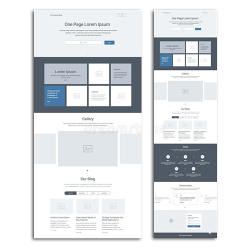
Programming & Tech
E-Commerce Website Development on Joomla
Product Info
Developing an e-commerce website on Joomla involves installing Joomla on your web server and choosing an e-commerce extension like VirtueMart, HikaShop, or J2Store. After installation, you configure the extension by setting up payment gateways, shipping options, and product categories. Customize the website's design using Joomla's templates, add products/services, and create additional content pages. Test the e-commerce functionality before launching the website. Regularly update and maintain your website for security and performance. Consider consulting with Joomla and e-commerce experts for assistance during the development process.Description
-
Joomla is a popular content management system (CMS) that can be used to develop e-commerce websites. Here's a general outline of the steps involved in developing an e-commerce website on Joomla:
-
Install Joomla: Start by downloading and installing Joomla on your web server. You can find the latest version of Joomla on the official Joomla website (joomla.org). Follow the installation instructions provided by Joomla to set up the CMS.
-
Choose an e-commerce extension: Joomla has various e-commerce extensions available that can be integrated into your website to add e-commerce functionality. Some popular Joomla e-commerce extensions include VirtueMart, HikaShop, and J2Store. Research these extensions and choose the one that best suits your requirements.
-
Install the e-commerce extension: After selecting an e-commerce extension, you need to download and install it into your Joomla website. Each extension will have its own installation instructions that you can follow to set it up correctly.
-
Configure the e-commerce extension: Once the extension is installed, you'll need to configure it to meet your specific needs. This typically involves setting up payment gateways, shipping options, product categories, and other settings related to your e-commerce operations. Refer to the documentation provided by the extension developer for guidance.
-
Design your website: Joomla provides a range of templates that you can use to customize the appearance of your website. Choose a template that is compatible with your e-commerce extension and customize it according to your brand's requirements. You can modify the template's layout, colors, fonts, and other design elements through the Joomla administration panel.
-
Add products and content: Begin adding your products or services to your website by using the features provided by the e-commerce extension. This typically involves creating product listings, setting prices, adding descriptions, and uploading product images. Additionally, you may want to create other content pages such as an about page, contact page, and terms and conditions page.
-
Test and launch: Before launching your website, thoroughly test the e-commerce functionality to ensure everything works as intended. Test the shopping cart, payment process, and any other features specific to your business. Once you are satisfied with the testing results, you can launch your e-commerce website to the public.
-
Maintain and update: Regularly update your Joomla installation, e-commerce extension, and any additional extensions or plugins you may have installed. This will help ensure the security and stability of your e-commerce website. Also, regularly update your product catalog, pricing, and content to keep your website up to date.
Remember, developing an e-commerce website requires careful planning, consideration of legal and security aspects, and providing a seamless user experience. It's recommended to consult with web developers or agencies experienced in Joomla and e-commerce development to assist you throughout the process if needed.
-


